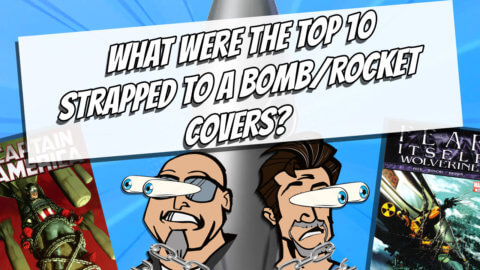Every week Comic Culture hosts Chris Owen and Walter Durajlija talk the comic book talk.
So kick back, relax and enjoy this week’s Comic Culture.
Oh, and please, please make sure you go out and support your local comic book shop.
Comic Culture is written by Walter Durajlija and engineered by Chris Owen.
Enjoy Comic Culture’s May 16th 2018 Edition:





The business model discussion was very interesting, but also it is interesting that a fairly hooked-in industry participant is just speculating on the reasons for pricing decisions. That DC doesn’t try to explain its pricing to dealers is peculiar, especially given your straightforward dissection of why comic book sales cannot be a meaningful profit-making activity for Time Warner yet is critical to their far larger entertainment and licensing.
Let’s just throw out some numbers: if DC sells one million comics a month at retail $3 and just breaks even (and let’s assume a dealer markup of 50% – you can tell me if that’s about right), that works out to a total cost of $18 million per year – maybe 5% of the domestic revenue from a reasonably performing movie based on the characters. In that case, why don’t they just give the comics away, as this would lead to the widest distribution and support of the much larger follow-on activities?
One answer is that if they gave them away (or charged a nominal cost to make sure only real readers would take the books) the demand would increase, and so would the variable costs. This suggests another answer – the cost structure is already inverted and DC already doesn’t cover its costs by a wide margin. If most of the costs are variable rather than fixed (paper, ink, distribution, etc.), raising the cost will further lower demand (as you have discussed), and so bring the net closer to breakeven by both increasing per unit cost and reducing the number of units sold. In that case, DC is and will still be running the comic publishing business as a money loser, but they have set a ceiling on this loss, and the price increase will keep them below the ceiling.
So imagine that it actually costs DC $5 per comic sold. Currently this is an annual cost of $60 million. The price increase will drop this in two ways – by decreasing the cost per comic to $4 and decreasing the readership. Following Walt’s fixed budget example, imagine the number of books sold decreases by 30% (and ignore the implied additional unit cost). Then DC’s annual cost drops to 700k * $4 * 12 = $34 million.
The downside for DC is reduced distribution and visibility – but already this is very low, and the cost increases will force out the marginal buyers rather that the core aficionados (who are the real targets). Using Walt’s terminology, what is really going on here is R&D, as well as marketing. By the argument above, DC’s R&D and marketing (via new comic publishing) budget would be about $50 million, and the price increase keeps it within this budget. (That number seems to high to me, but it’s just an example calculation.)
There is another aspect that might play into this, which is luxury marketing. Clearly at these prices comics are something of a “consumer luxury” (you can have lunch for the cost of one comic). It could be that there is a perception that DC books aren’t “as good as” Marvel’s simply because of the lower price. (Note that the “bargain” comics are always pitched to little kids, even though almost all of the variable costs are the same.) If the purpose of comic publishing these days is a combination of R&D and marketing, you don’t want to be perceived to be marketing a “low end” superhero. “DC charges less than Marvel because its not as popular” is not a sentiment that DC wants circulating in front of its movie releases or merchandising deals. The core comic buyer is the tip of the iceberg these days, but as in the case of the iceberg, they are the visible word-of-mouth marketing presence in front of all of the real money-making, so they need to be carefully managed.
Thanks Chris, you hit on some excellent points in your analysis.